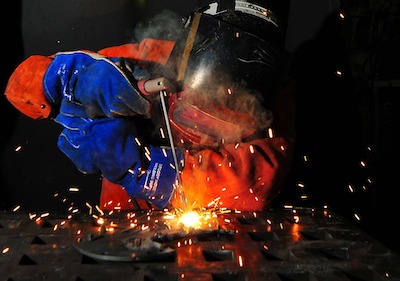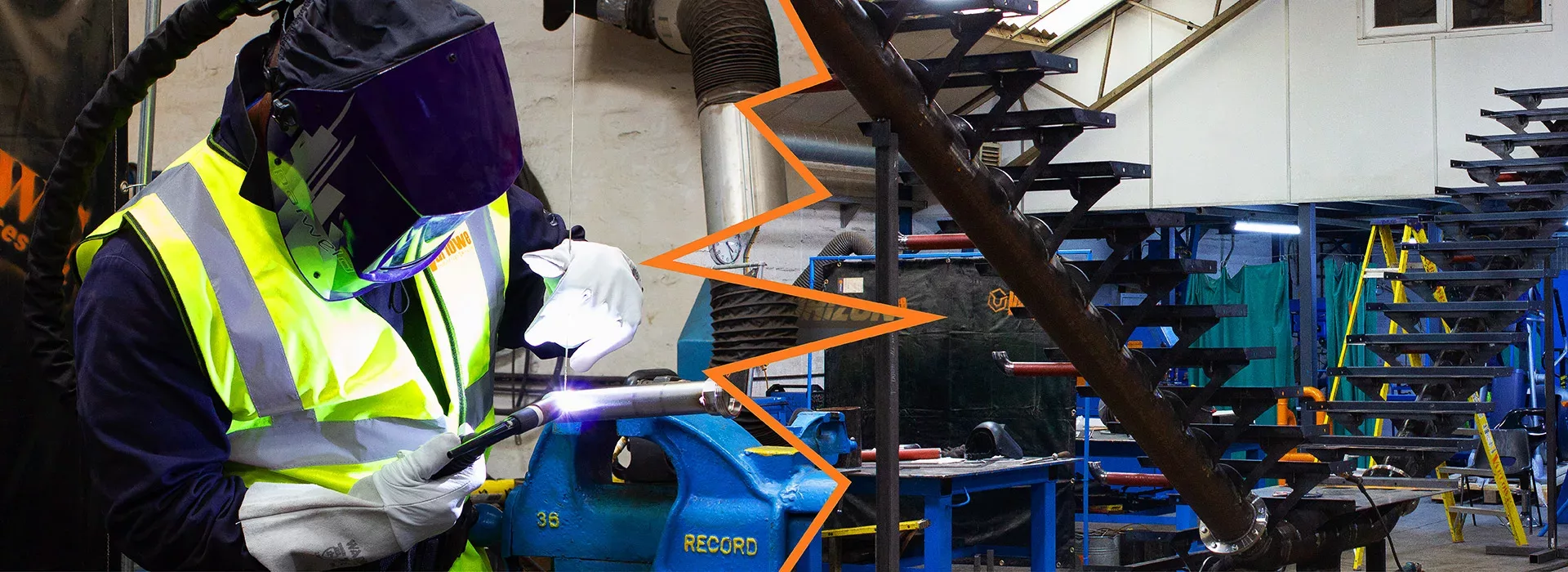Usual Welding Repair Service Issues and Exactly How to Address Them Successfully
Welding repair services typically experience a variety of concerns that can jeopardize the stability of the end product. Typical problems consist of poor infiltration, porosity, and misalignment, to name a few. Each problem offers one-of-a-kind obstacles that need particular strategies for resolution. Recognizing these problems is important for welders aiming to boost their outcomes and abilities. This conversation will certainly check out these typical welding repair problems and reliable methods to resolve them.
Inadequate Penetration
Poor penetration happens when the weld steel stops working to fully fuse with the base product, leading to weak joints and possible architectural failures. This problem commonly comes from insufficient warm input, wrong electrode angle, or inappropriate welding rate. Welders may encounter inadequate penetration due to a mistake of the essential specifications for a particular material density or kind. Furthermore, contamination on the base product's surface area can impede efficient bonding, worsening the issue. To resolve inadequate penetration, welders ought to ensure appropriate setups on their tools and keep a tidy work surface. Normal assessment of welds is advised to recognize any deficiencies early, allowing for prompt corrections and the prevention of endangered structural stability in welded settings up.
Porosity
Porosity is a typical flaw in welded joints that shows up as tiny gas bubbles caught within the weld metal. This issue can jeopardize the honesty of the weld, resulting in reduced strength and potential failing under anxiety. Montana Mobile Welding and Repair. Porosity usually develops from contamination, wetness, or improper welding methods, which enable gases to escape right into the liquified weld swimming pool. To resolve porosity, welders must assure appropriate surface area prep work, maintain a tidy workplace, and utilize appropriate welding specifications. In addition, selecting the best filler product and securing gas can reduce gas entrapment. Routine examination and testing of welds can assist identify porosity early, guaranteeing prompt corrective actions are taken, consequently maintaining the high quality and dependability of the bonded structure
Imbalance
Imbalance in welding can emerge from numerous factors, including improper configuration and thermal development. Understanding the origin is essential for efficient resolution. Numerous correction methods are offered to straighten components and assure structural stability.
Reasons for Misalignment
Welding misalignment often stems from a selection of underlying problems that can jeopardize structural stability. One main cause is improper fit-up of components prior to welding, which can cause spaces and unequal surface areas. Variations in thermal development throughout the welding procedure can additionally cause distortion, especially if the products being signed up with have different coefficients of development. Furthermore, insufficient fixturing and securing may fail to hold elements firmly in location, resulting in movement throughout welding. Badly conserved devices, consisting of welding makers and tools, may present disparities in the weld grain, more adding to imbalance. Operator mistake, stemming from insufficient training or experience, can likewise play a significant function in developing misaligned welds.

Modification Techniques Offered
Addressing imbalance properly requires a mix of restorative strategies tailored to the certain problems at hand. One usual approach is the use of fixtures or jigs to hold components in the proper setting throughout welding, making certain constant placement. Furthermore, preheating the products can help decrease distortion and enhance fit-up. For substantial imbalance, mechanical adjustment techniques, such as making use of hydraulic jacks or clamps, can be employed to fix the setting prior to welding. Post-weld warm therapy might also be required to ease anxieties brought on by misalignment. Cautious assessment and adjustment during the arrangement phase can avoid imbalance problems from coming to be substantial problems, advertising a smoother welding process and enhancing overall architectural integrity.
Distortion
Distortion is an usual obstacle in welding that can develop from different factors, consisting of uneven cooling and heating. Understanding the reasons of distortion is essential for carrying out reliable prevention methods. Addressing this problem not only boosts structural integrity but additionally enhances the overall high quality of the weld.
Sources of Distortion
When based on the intense warm of welding, products often undertake adjustments that can lead to distortion. This phenomenon largely develops from thermal development and tightening during the welding procedure. As the weld area warms up, the material expands; upon cooling, it acquires, which can develop interior stresses. On top of that, unequal heating across a work surface can worsen these tensions, leading to bending or bending. The kind of material likewise plays a significant function; metals with varying thermal conductivity and coefficients of expansion might react differently, bring about unpredictable distortions. In addition, bad joint design and inadequate fixturing can add to imbalance during welding, boosting the likelihood of distortion. Comprehending these causes is important for reliable welding repair service and avoidance methods.
Avoidance Techniques
Efficient avoidance strategies for distortion throughout welding concentrate on controlling warm input and making certain correct joint design. Maintaining a regular warm input aids to reduce thermal development and contraction, which can bring about distortion. Using methods such as preheating the work surface can likewise minimize the temperature gradient, promoting consistent home heating. Furthermore, choosing proper joint layouts, such as T-joints or lap joints, can boost security and reduce stress and anxiety focus. Carrying out correct fixturing to protect the workpieces in area additionally aids in preserving positioning throughout the welding procedure. Staggered welding sequences can distribute heat a lot more evenly, stopping local distortion. By applying these approaches, welders can greatly reduce the likelihood of distortion and enhance the total high quality of their welds.
Fracturing
Cracking is a common problem encountered in welding repair work, often resulting from numerous variables such as inappropriate air conditioning rates, material option, or insufficient joint prep work. The incident of splits can significantly endanger the stability of the weld, causing prospective failures during procedure. To resolve this issue, welders have to first evaluate the source, making sure that products are compatible and appropriately chosen for the particular application. Furthermore, regulating click to read more the air conditioning rate during the welding procedure is vital; quick cooling can cause anxiety and cause splitting. Correct joint design and preparation also add to reducing the risk. Applying these methods can improve weld high quality and toughness, eventually reducing the possibility of breaking in finished weldments.

Insufficient Blend
A considerable issue in welding fixings is insufficient fusion, which occurs when the weld steel does not effectively bond with the base material or previous weld passes - Montana Mobile Welding and Repair Belgrade Welding. This defect can cause weaknesses in the joint, potentially compromising the stability of the welded structure. Aspects adding to incomplete fusion include inadequate warm input, incorrect welding method, and contamination of the surfaces being signed up with. To address this concern efficiently, welders should ensure correct pre-weld cleaning and surface area prep work, in addition to readjust their welding specifications to attain sufficient penetration and blend. Routine examination during the welding procedure can also assist recognize insufficient blend early, permitting timely restorative measures to enhance the total high quality of the weld
Overheating
While welding repair work can improve structural stability, overheating presents a considerable obstacle that can result in material destruction. Excessive warm during welding can modify the mechanical residential or commercial properties of steels, leading to reduced stamina, raised brittleness, and warping. This phenomenon is particularly essential in high-stress applications where architectural welder fabricator reliability is vital. Recognizing getting too hot can entail visual evaluations for staining or distortion, in addition to checking temperature level during the welding process. To mitigate the risks connected with overheating, welders need to use suitable strategies, such as regulating warmth input, changing travel rate, and using suitable filler materials. Additionally, executing pre- and post-weld warmth treatments can assist bring back product properties and boost the general top quality of the repair work, ensuring long-lasting efficiency and safety.
Often Asked Concerns
What Are the Common Indications of a Welding Issue?

Exactly How Can I Check My Welds for High quality?
To test welds for quality, one can utilize visual evaluations, ultrasonic testing, and radiographic methods. Each strategy ensures structural honesty, recognizes defects, and verifies adherence to defined criteria, ultimately improving the dependability of the welded joints.
What Safety Preventative Measures Should I Take While Welding?
When welding, one need to prioritize safety and security by using suitable individual protective tools, ensuring correct air flow, securing combustible materials away, keeping a tidy work area, and being aware of surroundings to stop injuries and accidents.
Can I Fix a Weld Without Redesigning the Entire Joint?
Fixing a weld without redoing the entire joint is possible, relying on the damages (Montana Mobile Welding and Repair Fabrication). Techniques such as grinding, including filler material, or using a welding procedure can properly deal with specific defects while maintaining the surrounding framework
What Tools Are Vital for Efficient Welding Fixes?
Crucial tools for efficient welding repairs include a welding equipment, cable brush, mill, protective gear, clamps, and filler products. Each device plays a crucial duty in guaranteeing high quality and safety and security throughout the fixing process. Porosity typically emerges from contamination, wetness, or improper welding strategies, which enable gases to escape right into the liquified weld pool. Badly conserved devices, consisting of welding machines and devices, might introduce incongruities in the weld grain, further adding to imbalance. When subjected to the intense warm of welding, materials often undertake have a peek at these guys modifications that can lead to distortion. Fracturing is an usual issue run into in welding fixings, typically resulting from different factors such as incorrect cooling prices, material selection, or poor joint prep work. A considerable issue in welding repair services is insufficient fusion, which happens when the weld steel does not adequately bond with the base material or previous weld passes.